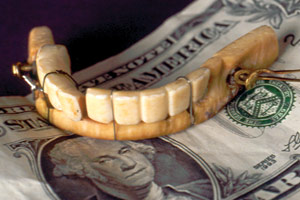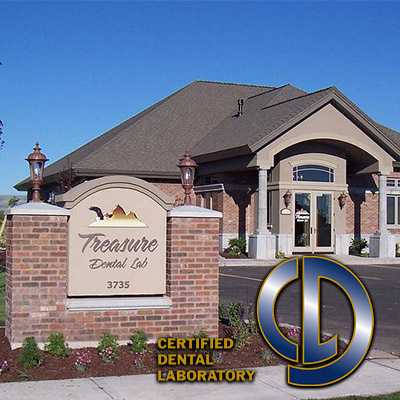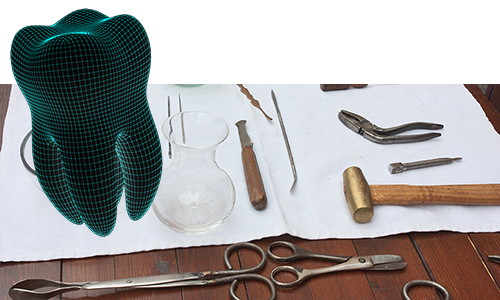1. Set standards. Once the dentist is ready to start sending cases,
establish what you need from him. While the software that accompanies the
scanner walks the dentist through obtaining the three pieces of information you
need—prep arch, opposing arch and bite scan—there are details that are
sometimes missed but are essential for the laboratory. For example, for
anterior cases, Kevin Westrich Jr., Lab Manager, FEDL/D3 Solutions, Maryland
Heights, MO, tells the dentist to always “scan partners. If we’re making a
bridge for teeth #6-8, having the size and shape of #9-11 is really important
for esthetics,” he says.
2. Get the bite right. A problem Owner Lonni Thompson has run into is
dentists not scanning enough teeth to get a bite. “The software will signal
that the operator can stop scanning, but there might not be enough teeth
scanned to get an accurate bite. I always advise my dentists to keep scanning
even after it tells you to stop,” says Thompson, Image Gallery, Dublin, OH. “If
they don’t get enough teeth, we have to manually set the bite after post
processing, which basically negates the entire point of doing it digitally.”
3. Sometimes less
is more. However, lab owners say there’s a delicate balance to getting
the right amount of what’s needed in a scan; in some cases, too much scanned is
a bad thing. “Some doctors send a full-arch scan for a single crown, since it’s
what they’re used to doing with analog impressions,” Westrich says. But too
much unnecessary information can slow things down on the lab’s end, including the
transfer of data between portals and the printing or milling of the models. In
these cases, Westrich asks the doctor if the lab can send back a quadrant only.
4. Verify scan
without color. If the dentist has a newer scanner that works in color,
he should always verify the scan without color before sending it to the lab.
“When the scan is in black and white, the contrast is better and the margins
show up more clearly,” Thompson says.
5. Pack cord. Dentists should still pack cord when taking a digital impression. “With
PVC impressions, the viscosity of the material helps push away the tissue from
the margins,” Thompson explains. “When taking a digital impression, some
dentists don’t realize they should leave the second cord in until they’re ready
to scan, then pull the cord and take the scan immediately so the tissue will be
clear of the margins.”
6. Remind
dentists about preventive maintenance, which
is necessary to avoid glitches and keep the scanner running smoothly. For
example, each brand of scanner has a time frame in which it needs to be
calibrated. Some, like the TRIOS®, send the user a reminder but not
all do.
“My
rule of thumb is to recalibrate every two weeks,” says Westrich. “If you don’t,
it’s like using expired impression material. It can throw off a bite and
cause open contacts or even margin issues.”
The
process itself is easy: most models come with a calibration unit that the
scanner plugs into and the software walks the operator through the process,
which typically only takes a few moments.
Westrich also advises dentists keep the scanning computer
clean since the more the scanner is used, the more data that’s being stored on
it, and this can slow the scanner down or make it difficult to send files to
the lab. He recommends that dentists compress files to free up space; invest in
a simple, external hard drive or cloud backup system; and, if necessary, enlist
an IT person to help clean up the system.
Reprinted with permission from LMT, February 2019 issue; www.LMTmag.com




